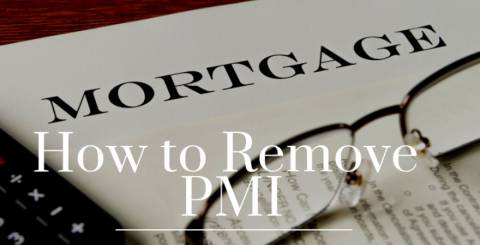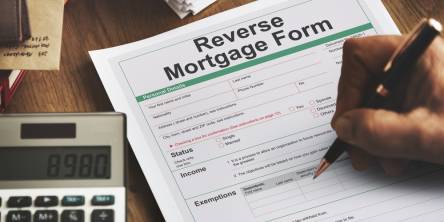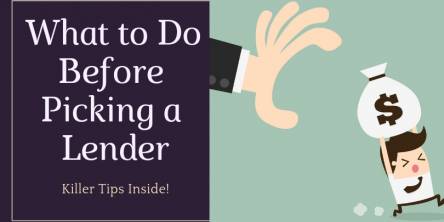How to Get Rid of Private Mortgage Insurance (PMI)

If you purchased the house with less than a 20% down payment, the lender probably required you to buy private mortgage insurance. This also is true for any refinancing loans with less than 20% equity. Private mortgage insurance protects the lavender from the elevated risk presented by a borrower with a small down payment. It is put in place in case the borrower defaults on the loan. Think of it this way, if a borrower purchases a $300,000 home and can only put 3% down, that's just $9000 in immediate equity. If a borrower defaults on the home loan and the lender is now stuck with the property, there's not enough equity to relist to the home and pay for commissions, which means that the lender needs to pay more money to resell the home. Private mortgage insurance is put in place to cover any additional fees and costs that a lender would have to pay in order to resell the home.
Private mortgage insurance is an additional payment added onto the borrower's monthly mortgage payment and could be anywhere from an extra $50 per month to several hundred depending on the original price of the property. However, a lot of borrowers don't realize that once they have sufficient equity, PMI can actually be removed. So how does the borrower/homeowner get rid of private mortgage insurance?
Pay Down the Mortgage Faster
If you're like a lot of homeowners, you're probably just counting down the days that you can get rid of private mortgage insurance, reducing your monthly mortgage payment. Paying down your mortgage faster with a higher monthly payment is certainly one way to gain more equity faster. You can take the purchase price of your home and multiply it by 80%. Once you've paid down your mortgage to that amount, you can have the PMI removed. The Consumer Financial Protection Bureau requires homeowners to meet the following conditions in order to have their insurance removed:
- The request must be in writing.
- The borrower must have a good payment history and be current
- The lender may require proof that there are no additional liens or second mortgages on the home
- The borrower presents evidence that the value of the property has not declined. (If the value of the home has decreased, borrowers typically cannot cancel PMI)
Wait until the property is 78% of the purchase price.
The Homeowners Protection Act has a default setting, which requires a lender to cancel the PMI automatically if the mortgage drops to 78% of the original value of the home. For instance, if the original purchase price on the house was $200,000, the lender is required to cancel the insurance when the borrower's loan amount drops to $156,000. This is why it's important for borrowers to carefully monitor their mortgage balance. Although this happens automatically, borrowers need to be current on their mortgage otherwise the lender doesn't have to remove the insurance.
Refinance.
If interest rates drop farther than when you originally applied for the home loan, a refinance might be a better option. This will work if the new mortgage is for 80% or less of the home's current value. With a refinance you will need to pay for an appraisal, however, the appraisal will also tell you what the home is currently worth, offering you the evidence you'll probably need to get rid of the PMI. But remember, only do this if it makes financial sense. You may be removing the private mortgage insurance but if your interest rates are higher, you could actually be paying more each month with your mortgage payment.
Refinancing is the only option for getting rid of private mortgage insurance on most government-backed loan such as an FHA. You'll need to refinance from an FHA loan to a conventional loan in order to get rid of the PMI, but this is usually a positive move.
Of course, you can always sell your home if you want to do away with PMI, although that's really not what you're probably trying to do.
The mortgage hits the halfway point.
This is playing the long game but regardless of your loan to value ratio, lenders will terminate your PMI automatically when the mortgage is halfway finished. This would be in your 15 on a 30-year mortgage or 7 1/2 years on a 15-year mortgage. This is more appropriate for mortgages with the balloon payment or an interest-only loan.
Related: 7 Myths About Finances You've Probably Always Believed
Evidence that the value of the home has increased.
Another way to get rid of private mortgage insurance is to prove that the outstanding balance on your mortgage is 80% or less of the current value of the home. With increasing property values, this could very likely be the case. However, proving that the home supports a certain value could take a little bit of homework. Borrowers can purchase their own appraisal or speak to a local real estate agent about current home values in the area. Lenders will usually want solid proof, not just an opinion from an agent.
It's also important to note that most lenders will not remove PMI on mortgages less than two years old. Most lenders require at least two years of on-time payments before they'll remove the private mortgage insurance. This is something to learn ahead of time before paying for an appraisal, which could cost you up to $1000. Some lenders do require the borrower to use their own appraiser instead of choosing your own, so this would be important to ask.
More: 3 Ways to Boost Your Home's Value
Even if property values don't increase that dramatically in your area, conducting home improvements to boost the value can also work. A high rate of return remodeling project could increase the value of your home enough to remove PMI.
Just knowing about your options can put you in a better position to remove PMI early. Understand your rights and be proactive with your home loan.
Similar Articles
The mortgage industry has evolved significantly since the inception of digital lending platforms. Conventionally, obtaining a mortgage was quite complicated, involving many in-person visits, massive paperwork, and an extensive approval process.
Navigate the mortgage pre-approval process with ease. Our guide covers every step to help you secure your dream home efficiently and confidently.
In 2022, a staggering $427 billion was invested by homeowners in home improvements and repairs. For seniors navigating the challenging realm of renovations to improve their living spaces, the prospect can be both thrilling and intimidating
What Massachusetts Home Buyers Should Know About FHA 203(k) Loans If you're looking for a fixer-upper or looking to renovate your current property in Massachusetts, an FHA 203(k) rehab loan may be worth considering. This unique loan program offered by the Federal Housing Administration (FHA) allows borrowers to finance a home's purchase and rehabilitation costs.
Land loans and construction loans are two different financing options when it comes to building your own home. Land loans are ideal if you don't plan to build right away, while loans for construction are suitable for starting building immediately. There are various types of land loans, each with different requirements and interest rates.
As retirement looms, many seniors face financial challenges that demand creative solutions. In recent years, reverse mortgages have emerged as an increasingly popular option for older homeowners seeking to leverage the equity in their homes to improve their financial situation.
A land loan is used to purchase a plot of land. You may want to buy land to build your dream home or start a business. If you are looking at getting a land loan, a lot will depend on what you plan to use the land for.
The prevalent mess in economies due to corona skips no part of the economy and affects the core of stability. Of course, real estate cannot be an exception and have to confront the alterations that the notorious COVID-19 applies to.
Buying a home is probably one of the largest, most significant purchases of your life, so when you need to get a mortgage, you want to make sure you're getting the best lender and the best deals. How do you do it? These four tips and advice will help you choose a great lender and get the best deals.









